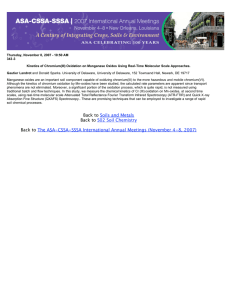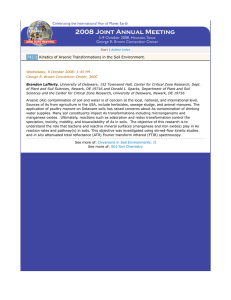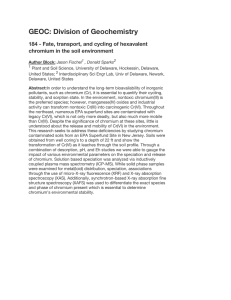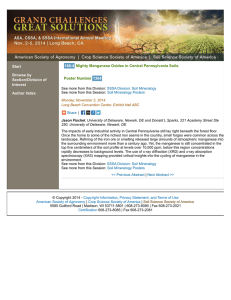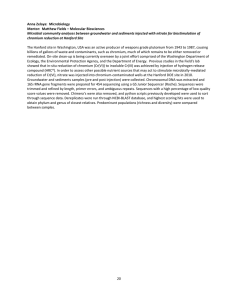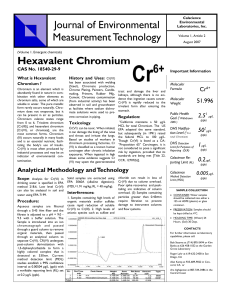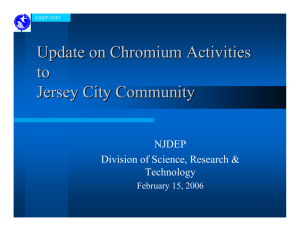150-20 Start Formation Mechanisms for Chromium Hydroxide Precipitation on Mineral
advertisement
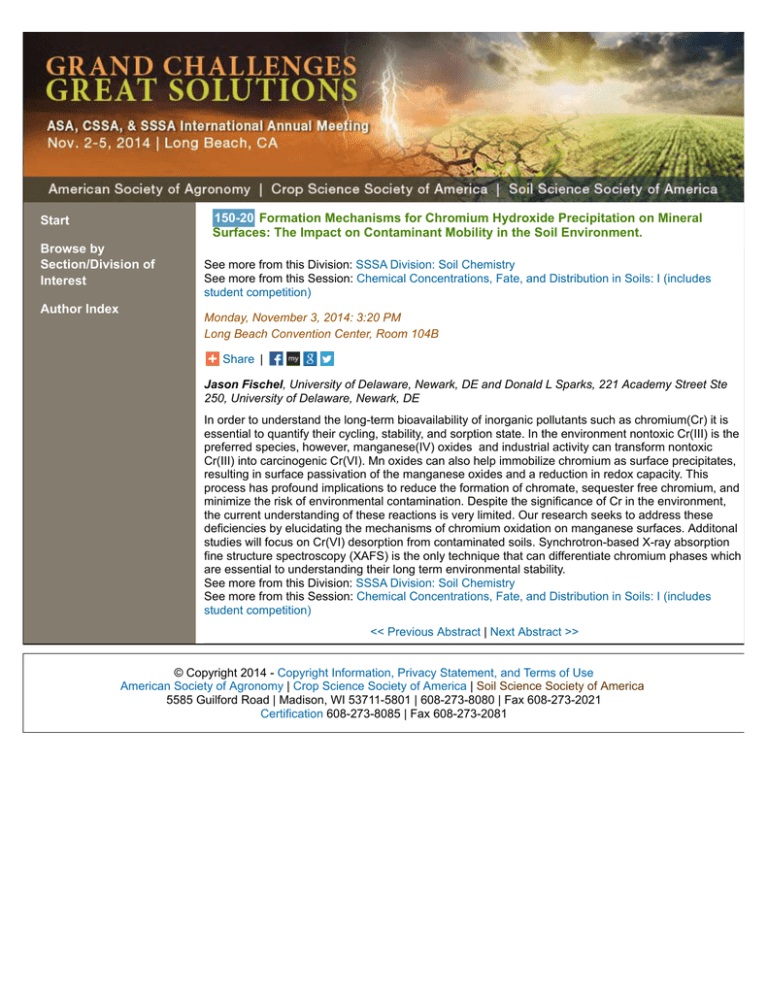
150-20 Formation Mechanisms for Chromium Hydroxide Precipitation on Mineral Surfaces: The Impact on Contaminant Mobility in the Soil Environment. Start Browse by Section/Division of Interest Author Index See more from this Division: SSSA Division: Soil Chemistry See more from this Session: Chemical Concentrations, Fate, and Distribution in Soils: I (includes student competition) Monday, November 3, 2014: 3:20 PM Long Beach Convention Center, Room 104B More Share | Share Share Share Share Jason Fischel, University of Delaware, Newark, DE and Donald L Sparks, 221 Academy Street Ste 250, University of Delaware, Newark, DE In order to understand the long-term bioavailability of inorganic pollutants such as chromium(Cr) it is essential to quantify their cycling, stability, and sorption state. In the environment nontoxic Cr(III) is the preferred species, however, manganese(IV) oxides and industrial activity can transform nontoxic Cr(III) into carcinogenic Cr(VI). Mn oxides can also help immobilize chromium as surface precipitates, resulting in surface passivation of the manganese oxides and a reduction in redox capacity. This process has profound implications to reduce the formation of chromate, sequester free chromium, and minimize the risk of environmental contamination. Despite the significance of Cr in the environment, the current understanding of these reactions is very limited. Our research seeks to address these deficiencies by elucidating the mechanisms of chromium oxidation on manganese surfaces. Additonal studies will focus on Cr(VI) desorption from contaminated soils. Synchrotron-based X-ray absorption fine structure spectroscopy (XAFS) is the only technique that can differentiate chromium phases which are essential to understanding their long term environmental stability. See more from this Division: SSSA Division: Soil Chemistry See more from this Session: Chemical Concentrations, Fate, and Distribution in Soils: I (includes student competition) << Previous Abstract | Next Abstract >> © Copyright 2014 - Copyright Information, Privacy Statement, and Terms of Use American Society of Agronomy | Crop Science Society of America | Soil Science Society of America 5585 Guilford Road | Madison, WI 53711-5801 | 608-273-8080 | Fax 608-273-2021 Certification 608-273-8085 | Fax 608-273-2081


